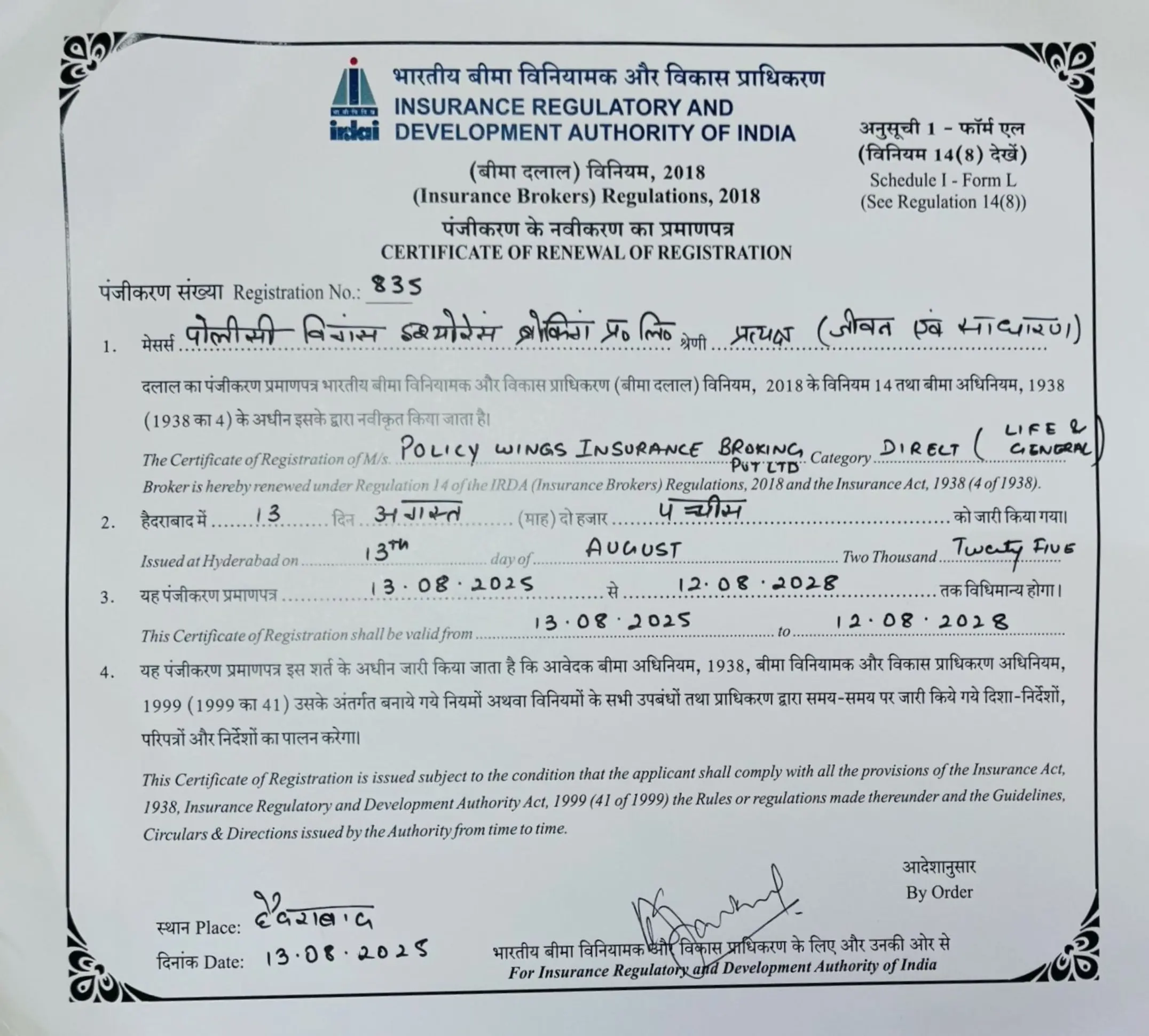Critical Illness Insurance For Stroke
Stroke is a debilitating medical condition that can strike without warning and leave a lasting impact on the affected individual’s life. This life-altering condition affects not only the person who suffers from it but also their loved ones.
The cost of treatment and care can add up quickly and cause a significant financial strain. In today’s fast-paced world, stress and lifestyle habits increase the likelihood of experiencing a stroke. Investing in a critical illness insurance policy for stroke can alleviate financial worries and ensure that the best possible treatment and care are received without any compromise due to the expense.
A critical insurance policy for stroke is a smart investment that provides peace of mind and a safety net in case the unexpected occurs. Keep reading to learn more about how critical illness insurance can help provide peace of mind and protect your financial future in the event of a stroke.
What is a stroke?
Stroke is a medical condition that happens when the blood flow to a part of the brain is disrupted, leading to the death of brain cells. It is the leading cause of disability worldwide and the second leading cause of death globally, after heart disease.
Stroke can affect people of any age, but the risk increases with age, as well as with certain lifestyle factors such as high blood pressure, smoking, and physical inactivity. Knowing the warning signs and risk factors of stroke is crucial in preventing this debilitating and potentially deadly condition.
Types of strokes
Strokes are generally classified into two main types: ischemic strokes and hemorrhagic strokes. Here’s an overview of each:
1. Ischemic stroke: Accounting for approximately 85% of all strokes, this is one of the most common types of stroke. It occurs when there is a blockage or clot in an artery – the way through which the blood is supplied to the brain. There are two subtypes of ischemic strokes:
Thrombotic stroke: This kind of stroke occurs when a thrombus, commonly knowns as a blood clot gets formed in one of the arteries that supplies the brain with blood. It often happens in areas with fatty deposits (atherosclerosis) in the blood vessels.
Embolic stroke: An embolic stroke happens when a clot of blood or other debris forms in the body (usually the heart) and moves through the body via the bloodstream to cause blockage to a smaller artery in the brain.
2. Hemorrhagic stroke: Resulting due to bleeding within or around the brain, hemorrhagic strokes are less common but tend to be more severe. There are two subtypes of hemorrhagic strokes:
Intracerebral hemorrhage: This happens when a blood vessel in the brain bursts, resulting in the release of blood into the brain tissue.
Subarachnoid hemorrhage: This type of stroke involves bleeding into the space between the brain and the thin tissues that cover it (subarachnoid space). It is often caused by the rupture of an aneurysm.
3. Transient Ischemic Attack (TIA): There is also a less common type known as a transient ischemic attack (TIA) or “mini-stroke.” TIAs are temporary and typically resolve within 24 hours. They are often considered warning signs of a potential major stroke and should be taken seriously.
4. It is crucial to recognise the symptoms and signs of stroke and seek immediate medical attention, as early intervention can significantly improve outcomes. The symptoms of a stroke can be sudden weakness or numbness in the face, leg, or arm, trouble speaking or understanding speech, confusion, severe headache, dizziness, and trouble walking.
Effects of stroke
A stroke is a medical condition that occurs when the blood supply to the brain is cut off or disrupted, leading to brain damage. Strokes can have severe effects on a person’s life and their ability to function normally. Depending on the area of the brain that is affected, the effects of a stroke can vary from mild to life-threatening.
1. One of the most common effects of a stroke is paralysis. This can occur on one side of the body, making it difficult or impossible for the person to move or use their limbs. They may also experience difficulties with speech, such as slurring their words or having difficulty understanding others.
2. Another effect of stroke is memory loss. The damage caused by a stroke can disrupt the brain’s ability to store and retrieve memories, leading to problems with short-term memory loss or forgetfulness. This can have a significant impact on a person’s quality of life, as they may struggle to perform basic tasks or remember important information.
3. Other effects of a stroke can include changes in mood or behaviour, difficulty with vision or perception, and chronic pain. Recovery from a stroke can be a long and challenging process, requiring intensive rehabilitation and therapy to help regain lost functions and improve overall quality of life.
Overall, the effects of a stroke can be devastating, but early detection and treatment can help to minimise the damage and improve outcomes. It is essential to get to a doctor immediately if you or someone you know experiences signs of a stroke, such as problems in speaking, sudden weakness, difficulty speaking, or loss of balance.
What are the symptoms of a stroke?
A stroke is a medical condition that occurs when the blood supply to the brain is interrupted or reduced. It is a serious medical emergency that can cause long-term disability and even death. Early detection and treatment can help minimise the effects of a stroke and prevent permanent brain damage.
One of the critical factors in early detection is recognising the symptoms of a stroke. We will take a closer look at what those symptoms are and how to spot them quickly.
The symptoms of a stroke vary depending on the location of the affected area in the brain. The common signs and symptoms of a stroke can be grouped into five categories:
- Feeling weak or feeling numbness on the single side of the arm, face or leg. The weakness or numbness may occur in one or more parts of the body.
- Feeling confused or experiencing difficulty in speaking or understanding speech. A person may slur their words, have trouble speaking coherently, or have difficulty understanding others.
- Unable to see properly in either or both eyes. A person may experience double vision, blurred vision, or loss of vision in one or either of the two eyes.
- Sudden headache that is extremely severe, with unknown cause. This is often described as the worst headache of a person’s life.
- Sudden difficulty walking, loss of coordination or balance. A person may stumble or have trouble walking straight or may experience dizziness or vertigo.
If you or anyone you know experiences any of these symptoms, it is crucial to call the emergency medical services immediately. Time is of the essence when it comes to treating a stroke and getting medical attention as soon as possible can make all the difference in the outcome.
Familiarising yourself with these signs can help you take quick action in case of an emergency. Remember that every minute counts when it comes to treating a stroke, so do not hesitate to seek help if you suspect that someone is having a stroke.
How is a stroke treated?
Strokes are medical emergencies that occur when the blood supply to a part of the brain is disrupted. Prompt medical attention is essential for stroke treatment to prevent long-term complications. Below are some of the ways a stroke can be treated:
1. Medications: Medications can help prevent or dissolve blood clots and manage high blood pressure, a significant risk factor for stroke. Clot-busting drugs, such as tissue plasminogen activator (tPA), can dissolve blood clots that are causing the stroke.
2. Surgery: Surgery may be needed to treat some types of strokes. Carotid endarterectomy is a procedure that removes plaque from the carotid arteries, which are the main blood vessels that supply blood to the brain. This procedure can help prevent a stroke in people who have had a transient ischemic attack (TIA) or a minor stroke.
3. Rehabilitation: Stroke survivors often require rehabilitation to regain the function lost during the stroke. Rehabilitation may involve physical therapy, occupational therapy, speech therapy, or all three. Rehabilitation can help improve balance, coordination, strength, and range of motion.
4. Lifestyle changes: Making lifestyle changes can help prevent future strokes. Lifestyle changes include maintaining a healthy weight, quitting smoking, eating a balanced diet, and ensuring daily exercise.
Stroke treatment involves a combination of medications, surgery, rehabilitation, and lifestyle changes. It is essential to seek prompt medical attention if you or someone you know experiences any symptoms of a stroke. Early treatment can minimise damage to the brain and prevent long-term complications.
What is critical illness insurance for brain stroke?
Critical illness insurance for brain stroke is a type of insurance coverage designed to provide financial protection to individuals in the event they are diagnosed with a brain stroke, which is a severe and often life-altering medical condition. If the policyholder is diagnosed with a covered brain stroke, the insurance plan typically provides a lump-sum payout.
This payout can be used to cover various expenses related to the stroke, including medical bills, rehabilitation, home modifications, and other associated costs. Critical illness insurance for brain stroke can help individuals and their families cope with the financial challenges that often arise due to this serious medical condition. It offers peace of mind and financial support during a challenging time.
Documents required for purchasing critical health insurance for stroke
When purchasing critical illness health insurance for stroke, you will typically need to provide various documents to the insurance company. The exact requirements may vary depending on the insurer and the policy, but here are some standard documents that are often required:
1. Application form: You will need to complete an application form provided by the insurance company. This form collects personal information, medical history, and other details required for underwriting.
2. Identification proof: A government-issued photo ID, such as a driver’s license or passport, or Aadhaar card, is usually required for identity verification.
3. Address proof: Proof of your current address, such as a utility bill, bank statement, or rental agreement, is typically needed.
4. Medical records: Depending on your age and medical history, the insurance company may request your medical records, including any recent diagnostic reports, test results, and details of any pre-existing conditions.
5. Income proof: Some insurers may require income-related documents, such as salary slips, income tax returns, or a statement from your employer. This helps determine the appropriate coverage amount.
6. Photographs: Passport-sized photographs may be needed for your policy documents.
7. Age proof: To verify your age, you may need to provide a birth certificate or any other official document that states your date of birth.
8. Proposal form: This is a detailed form provided by the insurer that requires you to disclose your medical history, including any pre-existing conditions and lifestyle habits.
9. Payment details: You will need to provide information about the payment method you intend to use to pay the premium.
10. KYC (Know Your Customer) documents: In compliance with regulatory requirements, insurers may ask for additional KYC documents, which can include documents related to your financial transactions.
11. Declaration of good health: Some insurers may require you to sign a declaration confirming that you are in good health at the time of application.
It is essential to check with your chosen insurance provider regarding their specific document requirements. Be prepared to provide accurate and complete information during the application process, as any discrepancies or omissions could affect your coverage or claims in the future.
Why buy critical illness insurance for stroke?
There are several compelling reasons to consider purchasing critical illness insurance specifically for stroke:
1. Financial protection: Stroke can lead to extensive medical bills, including hospitalisation, surgeries, medications, rehabilitation, and ongoing care. Critical illness insurance provides a lump-sum payout that can help cover these expenses, reducing the financial burden on you and your family.
2. Choice of care: The lump-sum payout offers flexibility in choosing the best care options for your specific needs. You can use the funds for specialised treatments, second opinions, or alternative therapies not covered by health insurance.
3. Supplement to health insurance: While health insurance covers medical treatments, it may not fully cover all the indirect costs associated with a stroke, such as modifications to your home or the need for a caregiver. Critical illness insurance complements your health insurance by providing funds for these additional expenses.
4. Quality of life: Stroke survivors often require modifications to their homes or vehicles to improve their quality of life and mobility. Critical illness insurance can help cover the costs of these adaptations.
5. Income replacement: A stroke can result in a temporary or permanent disability that prevents you from working. The payout from critical illness insurance can replace lost income, allowing you to maintain your financial stability.
6. Peace of mind: Knowing that you have financial support in the event of a stroke can provide peace of mind and reduce stress during a challenging time.
7. Family support: The financial assistance provided by critical illness insurance can alleviate the financial strain on your family members who may be involved in your care or may need to take time off work to assist you.
8. No restrictions on usage: Unlike some health insurance policies that have restrictions on how benefits can be used, critical illness insurance payouts can be used at your discretion to address your unique needs.
It is important to carefully review the terms and conditions of any critical illness insurance policy, including exclusions and waiting periods, to ensure that it aligns with your specific needs and circumstances.
Inclusions and exclusions of critical illness insurance for stroke
While opting for an insurance policy, it is crucial to thoroughly review the terms and conditions of your specific critical illness insurance for stroke policy to understand what is covered and what is not.
Inclusions (covered by the policy)
- Diagnosis of stroke: Critical illness insurance for stroke typically covers the diagnosis of stroke, including ischemic and hemorrhagic strokes.
- Hospitalisation: The policy generally covers the costs associated with hospitalisation, including room charges, medical procedures, and doctor’s fees.
- Medical treatments: Expenses related to medical treatments such as surgeries, medications, and rehabilitation are often covered.
- Post-stroke care: This may include expenses for physical therapy, speech therapy, and occupational therapy as part of stroke recovery.
- Secondary illnesses: Some policies may cover secondary illnesses or complications resulting from the stroke, such as infections or respiratory issues.
- Partial disability: In cases where the insured experiences partial disability due to a stroke, the policy may provide a partial payout.
Exclusions (not covered by the policy)
- Pre-existing conditions: Pre-existing heart conditions or a history of stroke may be excluded or subject to waiting periods and specific terms defined by the policy.
- Survival period: Many policies require the insured to survive a certain number of days (usually 30) after the diagnosis of stroke to be eligible for a payout.
- Intentional self-inflicted injuries: Self-inflicted injuries or attempts to harm oneself are typically not covered.
- Alcohol or drug-related incidents: Stroke resulting from alcohol or drug abuse may be excluded.
- War and terrorism: Injuries or illnesses resulting from war, acts of terrorism, or participation in illegal activities are generally excluded.
- Non-diagnostic strokes: Some policies may specify the criteria for diagnosing a stroke, and if these criteria are not met, the claim may be denied.
- Waiting periods: Policies often have waiting periods before coverage begins, meaning that claims made within this period may not be accepted.
- Non-disclosure: If the insured fails to disclose relevant medical information or provides false information during the application, it can lead to a claim being denied.
- Specific exclusions: Read the policy documents carefully, as there may be specific exclusions unique to each insurance provider and policy.
It is crucial to thoroughly review the terms and conditions of your specific critical illness insurance for stroke policy to understand what is covered and what is not. Additionally, consider discussing any uncertainties with your insurance provider or agent to ensure you have a clear understanding of your coverage.
How to renew critical illness insurance for stroke?
Renewing the premium for critical illness insurance for stroke is essential to ensure continued coverage. Here is how you can renew your premium:
1. Contact your insurance provider
Reach out to your insurance provider well before the policy’s renewal date. You can find their contact information on your policy documents or their official website.
2. Provide policy information
When you contact the insurance provider, be prepared to provide your policy number and personal information for verification.
3. Inquire about renewal options
Ask the insurance representative about the available premium renewal options. They will typically provide details on the premium amount, due date, and payment methods.
4. Payment methods
Enquire about the various payment methods accepted by the insurance company. They may offer options such as online payments, electronic fund transfers (EFT), credit card payments, or traditional check payments.
5. Review policy changes
Take this opportunity to review any changes to the policy terms and conditions. Insurance policies can be updated, so make sure you understand any modifications made since your last renewal.
6. Verify premium amount
Ensure you know the exact premium amount due for the renewal period. Verify this with the insurance provider to avoid any discrepancies.
7. Set up automatic payments
If available and convenient for you, consider setting up automatic payments for your premium. This ensures you never miss a payment and maintain continuous coverage.
8. Renew before the deadline
It is crucial to renew your premium before the policy expiration date. Failing to renew on time may result in a lapse in coverage, and you may lose the benefits of your insurance.
9. Receive confirmation
Once you have made the premium payment, request confirmation from the insurance provider. This can be in the form of an email or a physical receipt.
10. Keep records
Maintain records of your premium payments, policy documents, and any correspondence with the insurance company for future reference.
Remember that critical illness insurance for stroke is designed to provide financial protection during challenging times. Ensuring timely premium renewal is vital to maintaining this valuable coverage. If you have any questions or concerns during the renewal process, don’t hesitate to reach out to your insurance provider for clarification and assistance.
Frequently Asked Questions
Critical illness insurance for stroke typically covers hospitalisation, medical treatments, rehabilitation, medications, and additional costs associated with stroke recovery.
No, critical illness insurance often covers a range of conditions besides stroke, such as heart attack, cancer, organ transplants, and other major medical conditions, providing comprehensive coverage.
While it is possible to purchase critical illness insurance after a stroke, any claims related to the stroke will likely be excluded or subject to waiting periods and specific terms defined by the policy.
Leading Health Insurance Companies





Latest Blogs
Introduction While buying or renewing car insurance, you would surely come across two very common terms: Zero Depreciation and...
Introduction In India, getting insurance for your car is non-negotiable. With so many plans and so many add-ons available, it...
Introduction Everyone deserves healthcare but sadly, with the medical expenses rising so fast in India, not everyone can afford...
Introduction Do you think that buying life insurance means having to go through complicated policies and paperwork and paying...
Introduction You don’t buy a car insurance just fulfil a legal requirement. The repair costs have really increased, spare...
Introduction You can’t predict life but it’s always possible to secure the financial future of your family with life...
Introduction You have waited so long to finally purchase that car, saved for it and checked all those reviews....
Introduction Upon buying insurance, you will notice different short forms in your policy documents that might confuse you. One...









